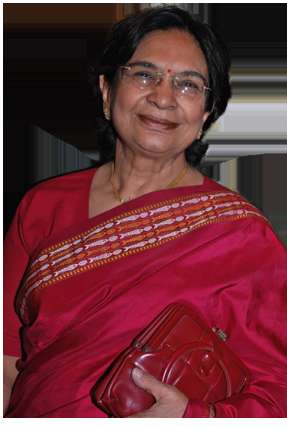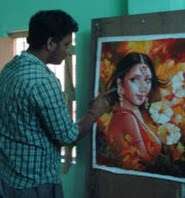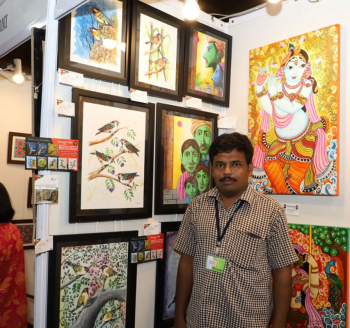Abstract art, specifically abstract watercolor art paintings, have become an emblematic genre of art. According to art experts, this form of art gained more hype predominantly after the masterpiece created by the Russian painter Wassily Kandinsky. Kandinsky discovered the abstract art by coincidence in his studio, when he out of the blue discerned that colors and shapes were vivid and eloquent on their own and don't have to be defined.
Based on these finding, Kandinsky used diverse aesthetically beautiful elements in tandem with the abstract form to create remarkable and natural shapes with the usage of bold colors. Late back in the year 1920s, the work of artists had undergone drastic transition, when it started outlining more geometric than natural shapes.
Watercolor Painting in the form of artwork
In abstract paintings, different colors and forms were used in paintings as the main theme, instead of a decipherable or conventional theme. Abstract watercolor painting ranges right from the geometric to the more fluid form, even though both entail constructive planning and implementation. Plus, these paintings also portray figurative abstractions, including a spiritual experience, sentiment or reverberation - even though removing the details, the fundamental spirit and quintessence is retained. Abstract watercolors on the whole gained new heights of popularity after post-Renaissance movements of Impressionism, Cubism and Fauvism. Each of these movements required to confirm the perception that a painting doesn't at all require a representative theme to convey the desired message.
Rise and fall of Abstract Watercolor Paintings
Since the ancient times, watercolors have been used to bejewel walls in the living and communal areas. With passage of time, new techniques and mediums were urbanized, which popularized the artwork to a great extent. During the medieval period and the Renaissance, paintings in the form of frescoes and murals were extensively admired.
The recognition of abstract watercolor paintings can be accredited to the American and British artists. Since watercolor paintings form a multifaceted art medium, artists are at ease with inventiveness, because naturalness is an indispensable building block in watercolor paintings. Whilst watercolor paintings were always well admired in Britain, the American artists followed and practiced under British artists.
However, back in the late 19th century, the US eye witnessed a sudden gush in watercolor paintings with a prominence on individuality. This was in grave disparity to the British faithfulness to inflexible ethnicity and schools of art. The fame of watercolor paintings also augmented with the emergence of paper. There were artists who have majorly used paper to paint their viewpoints, such as Leonardo da Vinci and Michelangelo.
However, the proliferation of Abstract Expressionism in the 1940s was the major reason behind decline in popularity of watercolors. Since watercolor was provided restricted scope to expressionists. However, in the second half of the 20th century artists do have evidenced the usage of ground-breaking watercolor techniques and restored the popularity of watercolor paintings.
Adorn your living area with beautiful art paintings created by distinguished artists. Take a tour to our Indian art gallery online and buy your favorite painting with a click of a button.





















